Last Sunday morning I went for a truly unusual Heritage Walk. It took me to look at buildings that were no longer there! The Walk, titled Vadodara – In the Presence of Absence, was part of a 3-day academic program, Re-imagining Documentation organized by SEDA and Heritage Trust, and held at the Alembic Heritage City. Designed and curated by Vishvesh Pathak, Asst. Prof. at School of Environmental Design & Architecture (SEDA), Navrachana University, and Researcher at SEDA’s Centre of Heritage Research, the Walk resonated with some of the questions that were raised regarding the different tools of documentation – tradition, modern, digital, futuristic – and offered an altogether different take on the subject.
Traditionally, cities and towns that pride themselves on their ‘ancient-ness’ try to look after their heritage buildings as these ‘document’ and are proof of that ‘ancient-ness’. But buildings don’t live forever and all buildings, no matter how precious and well-looked after, will one day bite the dust and make way for, hopefully, new architectural wonders. Vishvesh’s endeavor was therefore out-of-the-box – he identified buildings in my small town that should have been looked after and saved but that did not happen. However, their current ‘absence’ still speaks about their once upon a time significant ‘presence’. This can only be established by hearsay that is well-supported by historical research and documentation, which he has painstakingly studied to map this Walk.
A Jain Swadhyaya Mandir stands where once stood the Sureshwar Desai Haveli.
The Walk began from Ghantiada, a lane the off-shoots from the road that links Mandvi and Gendigate. The first building that registered its presence via its absence was Sureshwar Desai’s haveli. A spanking new white-washed Jain Swadhyaya Mandir stands in its place. This haveli was almost 250 years old. It was already in a dilapidated state when the Heritage Trust was trying to find funding to help save and conserve it in the mid-1980s. In fact, it was one of the first projects undertaken by the Trust and I believe a couple of trustees went and met the then descendants of the family to understand their needs and position regarding its conservation. I have seen it myself when I was working on a Heritage-Trust project, Do-It-Yourself 4 Walks in the Walled City map sometime around 2004 or thereabout. The roof had already caved in and the once luxurious home was ready for the bulldozer to finish the job.
Vishvesh Pathak stands at the Ghantiada corner. Opposite him is the Sureshwar Desai Lane that once housed the Haveli. The area came to be called Ghantiada because there were many poor families then in the neighbourhood who were provided with manual flour ghantis/mills by Desai. These were operated by women to earn a livelihood. However, what is interesting about this photograph is the angled pillar —so designed because the lane takes a turn here and the pillar would have come in the way of smooth movement of pedestrians/traffic.
Who was Sureshwar Desai and what did he do for my small town? Sureshwar Desai was an astute financer who lived in the walled city towards the fag-end of Moghul rule in Gujarat (around 1730s) when Baroda was administered by the Babi Nawabs who were Governors appointed by the Moghul Emperor in Delhi. In the wake of the 3rd Battle of Panipat (1761) in which the Marathas were roundly thrashed by the Afghan invaders led by Durrani, the Maratha Sardars with their own armies broke away from the weakened Peshweshahi of Pune and returned to strengthen their own regional fiefdoms. It is believed that Desai, along with Dala Patel and Pratap Margha, took the opportunity to invite the Marathas (Damajirao) to Baroda. There are khatpatra-s (daily diaries) that Desai used to maintain, two of which have been translated into English by Prof. Sulabha Gokhale from Dept. of History, MSU, which reveal a lot about life in this town a couple of centuries back. The Sursagar lake, originally Chandan Talav, was also built by him. (I used to believe, quite logically, that Sursagar got its name from the Music College on its banks. But that is not the case.) The khatpatra-s reveal that Desai has big plans for the urbanization of Baroda. Apparently, he was fed up with the frequent plotting and petty quarrelling incited by one Lad Bibi amongst the then powers-that-be and wanted Baroda to have a steady and strong ruler so that it can achieve the potential he envisioned for it.
The remnants of the Tankshal or the Mint. Buildings of the Shree Sayaji High School stand here.
The Shree Sayaji High School. It stands to the left of the Tankshal tunnel.
A little walk ahead and we reach another ‘Presence in Absence’ building – the Tankshal or the Mint (which minted the first coins of independent Baroda state in silver). The Shree Sayaji High School (estd. 1906) stands there now, fortunately another institution that schooled several eminent Baroda personalities, including the late Dr I G Patel, former Governor, RBI. The descendants of Damajirao Gaekwad had wasted no time in establishing their own kingdom here though they still paid obeisance to the Peshwa who had again become powerful in spite of the fact that they had lost the north of India. The Gaekwads built the Sarkarwada near Mandvi and Sayajirao I had begun to rule from there. This was not lost on Nana Phadnavis, an astute minister in the Peshwa administration, who wanted to control this growth and get Baroda back under the Peshwa thumb. So he began to find ways to create trouble for them. Sayajirao I buckled under the pressure but his brother Fatehsinh (or Baba Fateh as he was known) was made of sterner stuff and he was the one to establish the Tankshal. It is believed that he even moved to stay near the Tankshal and ruled from there.
The Haribhakti Haveli stood here till just a few months back …
Amongst the lanes and by-lanes that criss-cross the inner areas of the Walled City, there is one straight road that enters from Ghadiali Pol (on M G Road), moves under the specially-created semi-circular bypass near the Tankshal and emerges from Ghantiada (on Gendigate Road). This road houses several large temples and small shrines alongside. But, till a few months back it also housed the fabulous Haribhakti Haveli, another ‘Presence in Absence’. The Haveli was the ancestral property of the Haribhakti family tracing itself back to Haribhai and Bhaktidas, two brothers who were moneylenders and lived in the immediate post-Sureshwar Desai era. The Gaekwads were getting stronger with their ruler Govindrao expanding their territories and handling the political manipulations of the Peshwas with skill and cunning. When Phadnavis was suddenly arrested and jailed and supposedly died in prison (there are many different stories regarding this), the Afghan soldiers guarding the prison refused to release his body unless they were paid a fairly vast sum that was owed to them by the Peshwas. It was Govindrao who prevailed on the brothers Haribhai and Bhaktidas to pay the Afghans and release the body to the Phadnavis family.
We then walked to the nearby Amba Mata temple at the mouth of the Ghadiali Pol. While this temple is one of the most important in that area with the vast following, what is most significant is that behind this temple, enclosed in a tiny area that is no longer accessible and neither visible from the outside, is a shrine to the legendary Raja Vikramaditya of Ujjain (105 BC to 15 AD). It is believed that Vikramaditya was on a pilgrimage to the Harsiddhi Mataji temple near Rajpipla when he stopped at the Amba Mata temple on his way back. Apparently, he is believed to have breathed his last somewhere near where the Mandvi pavilion stands today. The shrine at the back of the Amba Mata temple was created in his honour. Another ‘Presence in Absence’.
The only standing part of the Sarkarwada that gives one an idea of the modestly splendorous palace this must once have been.
From here we walk towards the remnants of the Sarkarwada, the first modest Wada-style palace of the Gaekwads in Baroda, reduced to bare wooden pillars and floors. Then behind that, the ruins of the Nazar Baug Palace (their second, European-style, much more luxurious 6-storey high palace from where they could keep a ‘nazar’ on the surrounding areas!) and where a forlorn Mall has now come up. Sadly, we see some of the adjacent old buildings nearby currently in the process of being torn down. All ‘Presences’ in ‘Absences’ created in recent years.
Active demolition going on of the old Wada-style buildings in the environs of the Nazar Baug Palace. One part of the frame of the Palace gate can be seen to the right.
Not exactly a Walk that left you in an uplifted mood, but certainly one that offered much food for thought …
The grounds of the Nazar Baug Palace. The old Wada building at the back would be one of the few original buildings from about 200 years back …
References used by Vishvesh:
1. Brahmashila by Ramesh Joshi
2. A Study of Two ‘Khatpatra-s’ of Sureshwar Desai in the context of History of Baroda, Research Paper by Sulabha Gokhale, Dept. of History, MSU
3. Vadodara: Ek Adhyayan by Prof. R. N. Mehta
4. Vadodara: Jaanyu chata Ajaanyu, Vadodara Smart City Development Ltd.
5. Reformist Maharaja and his Dynasty, Directorate of Archeology and Museums, Govt. of Gujarat




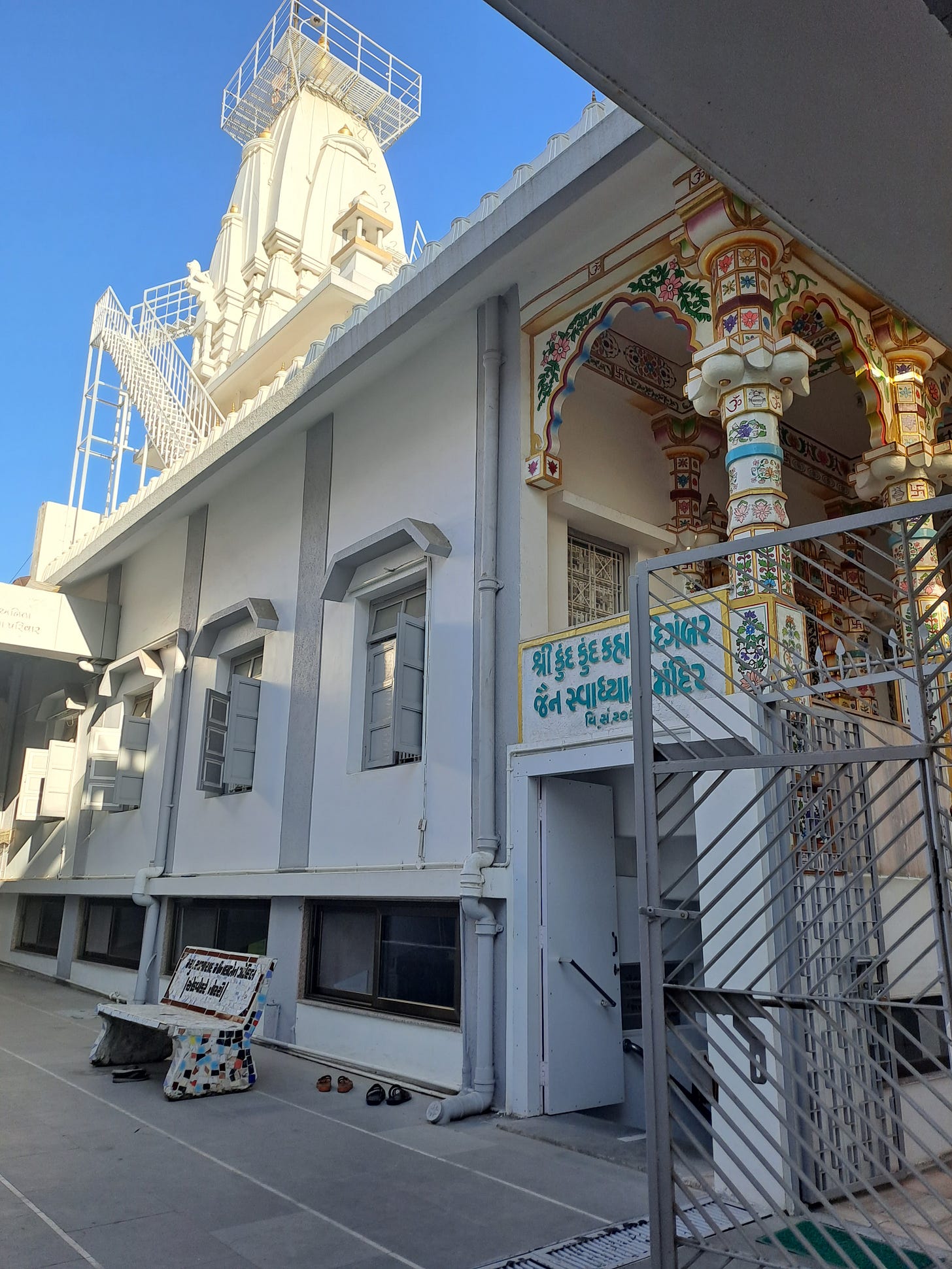
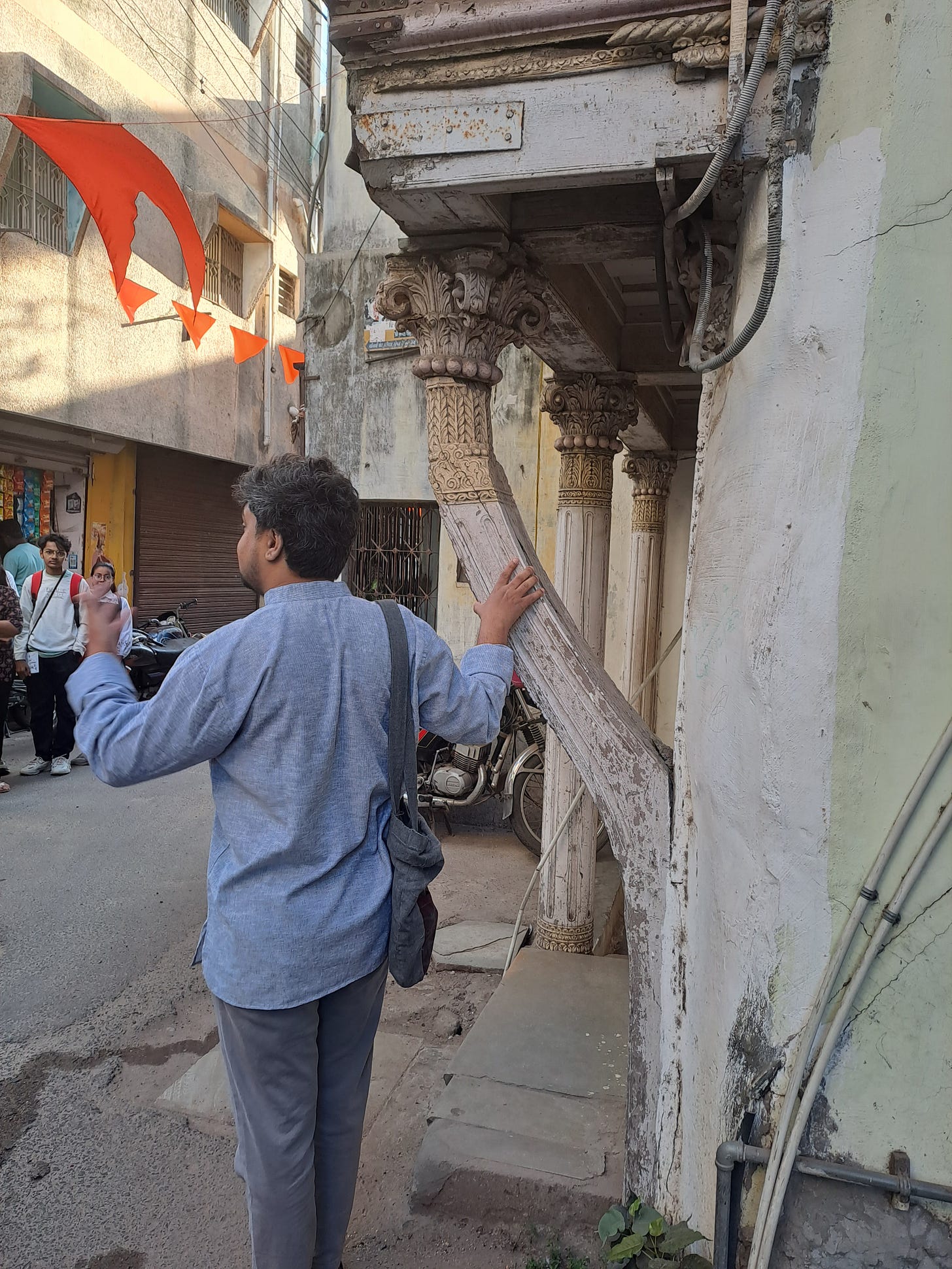
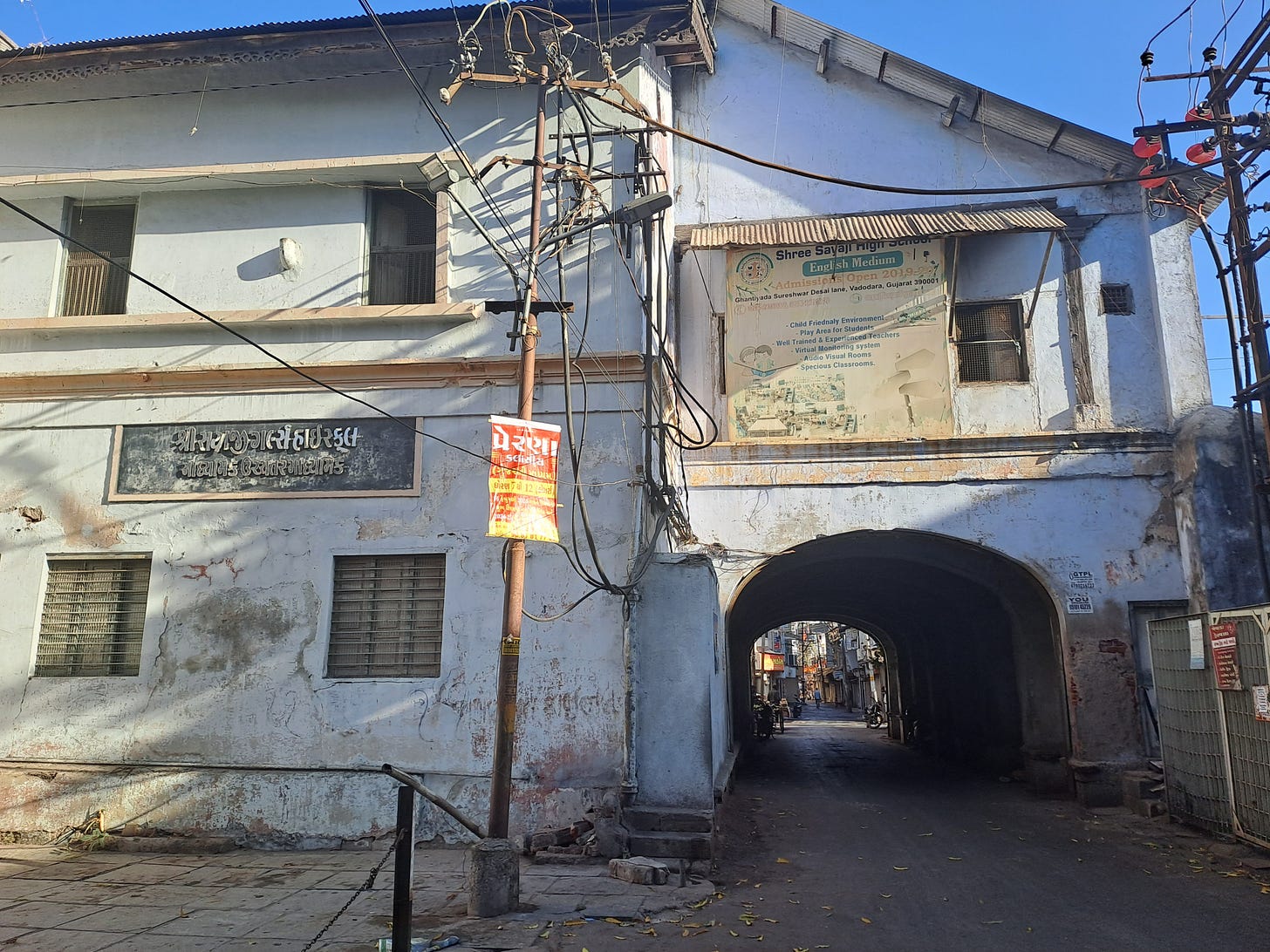
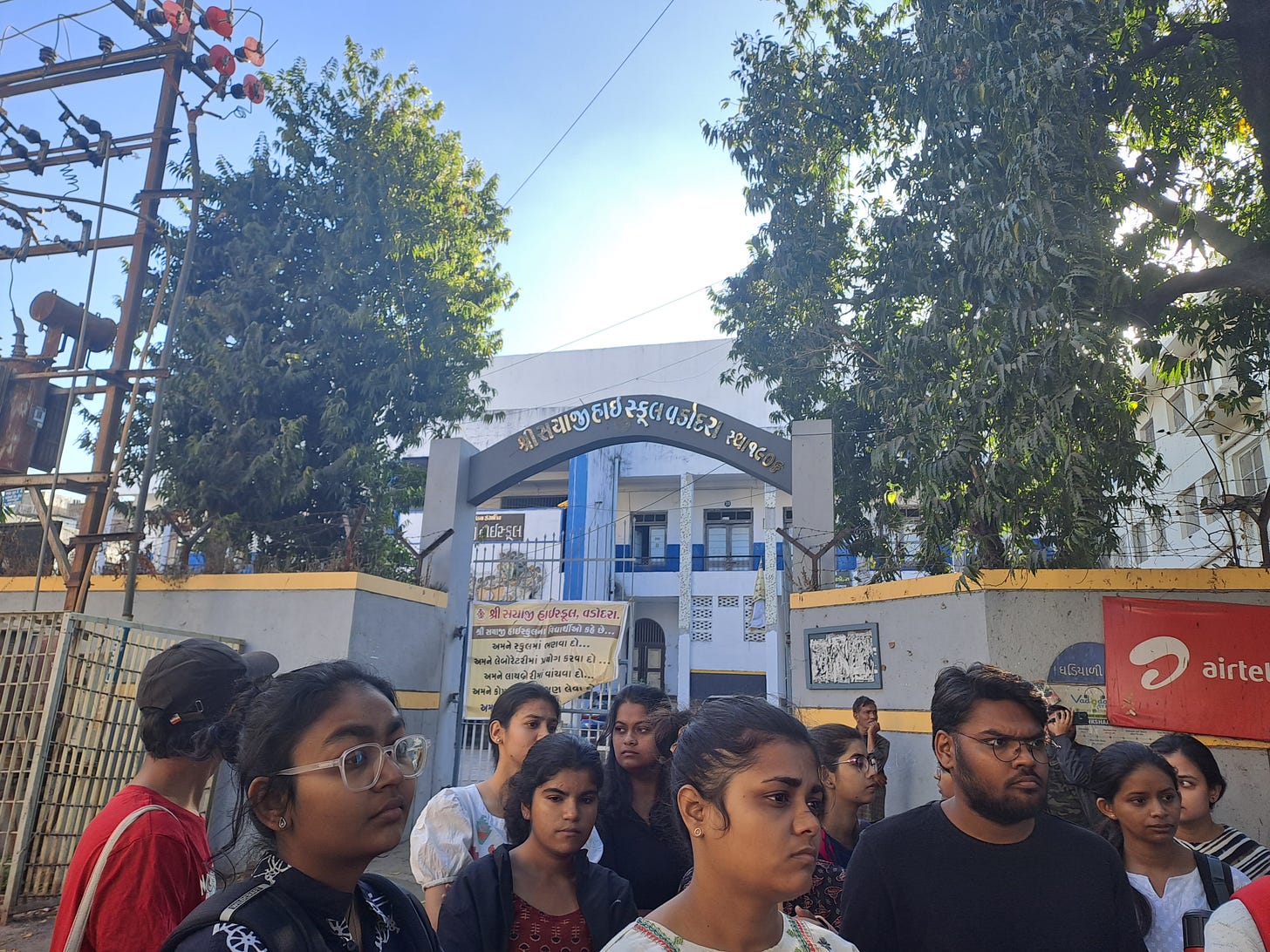
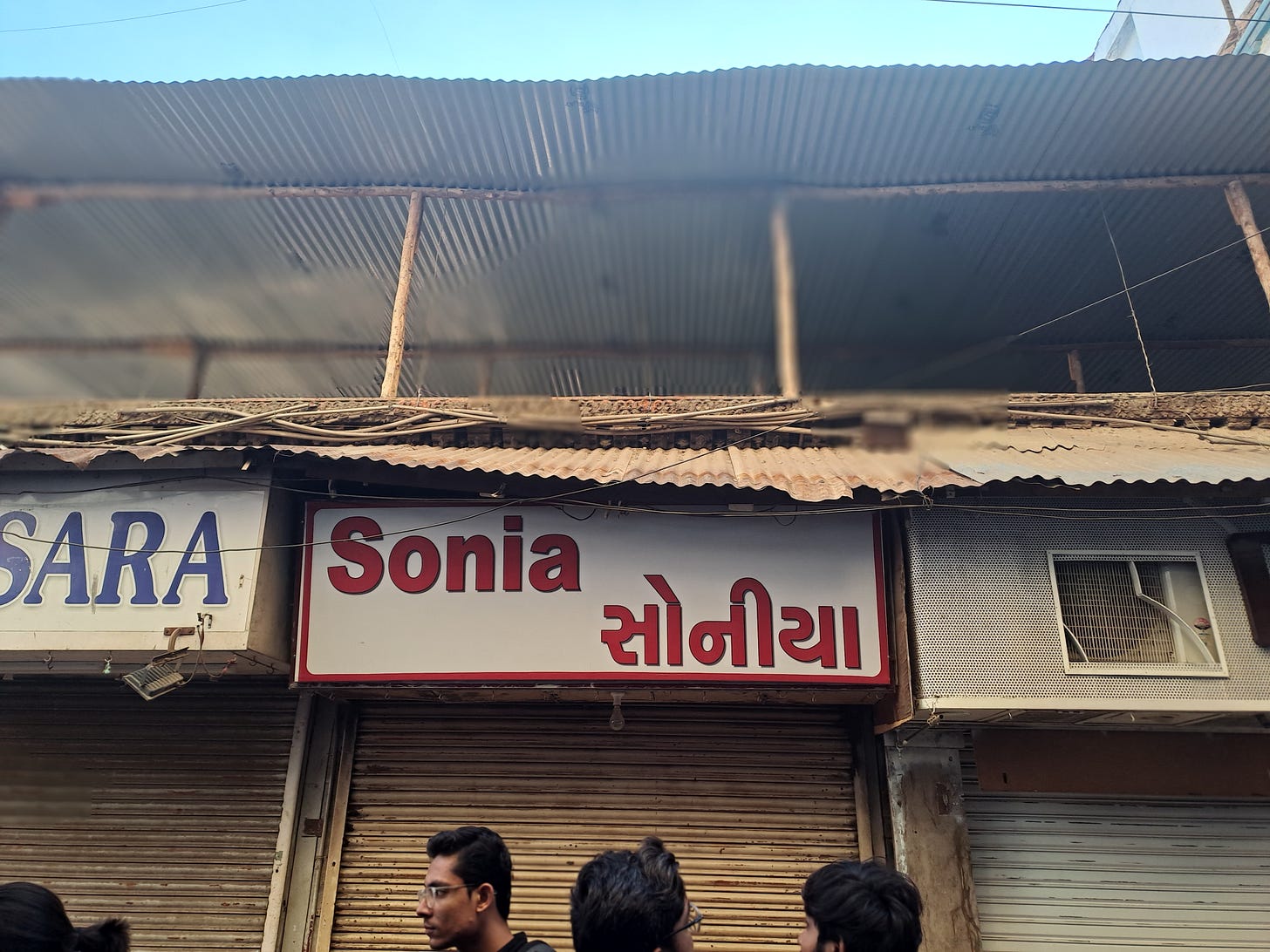

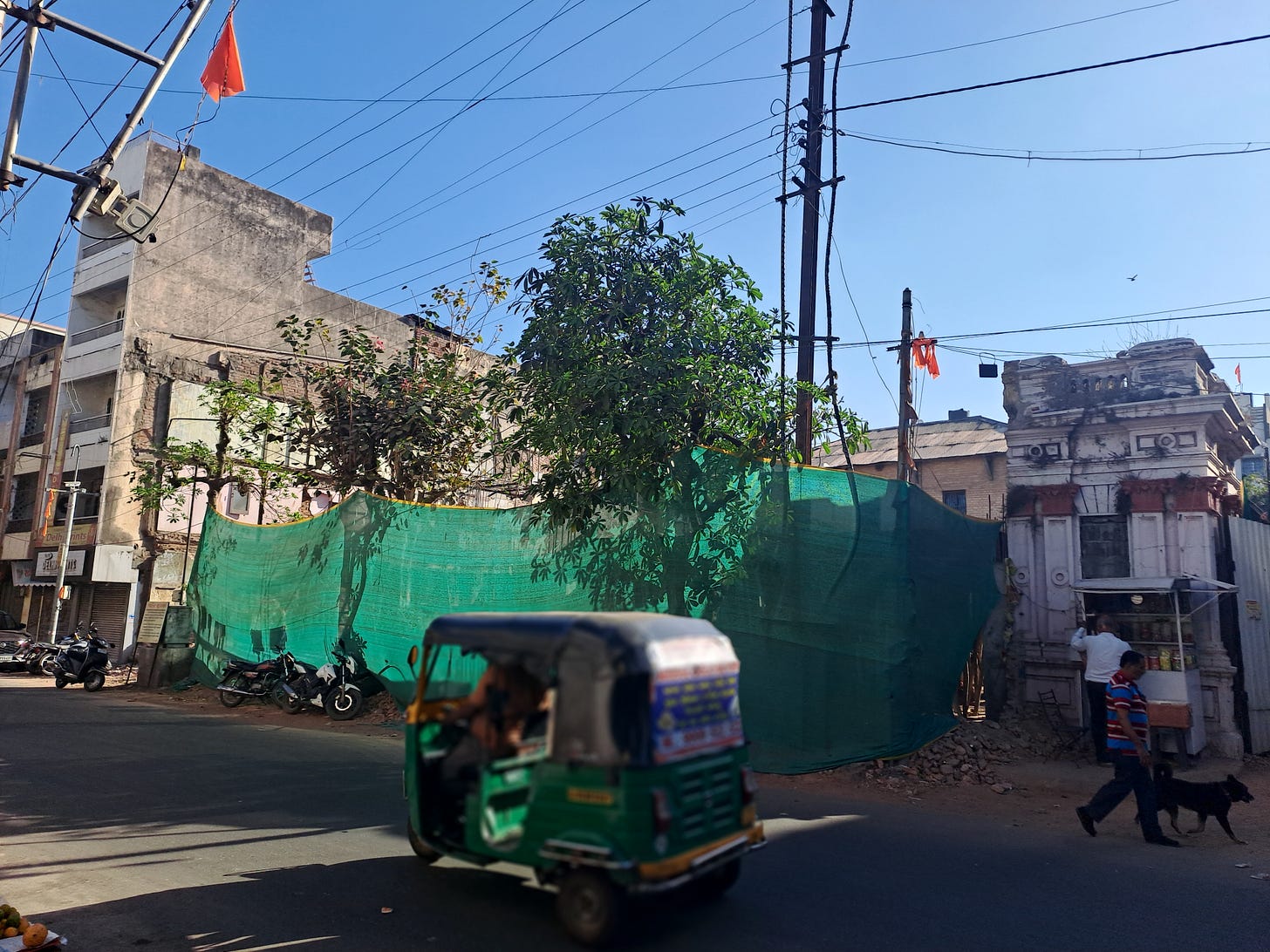
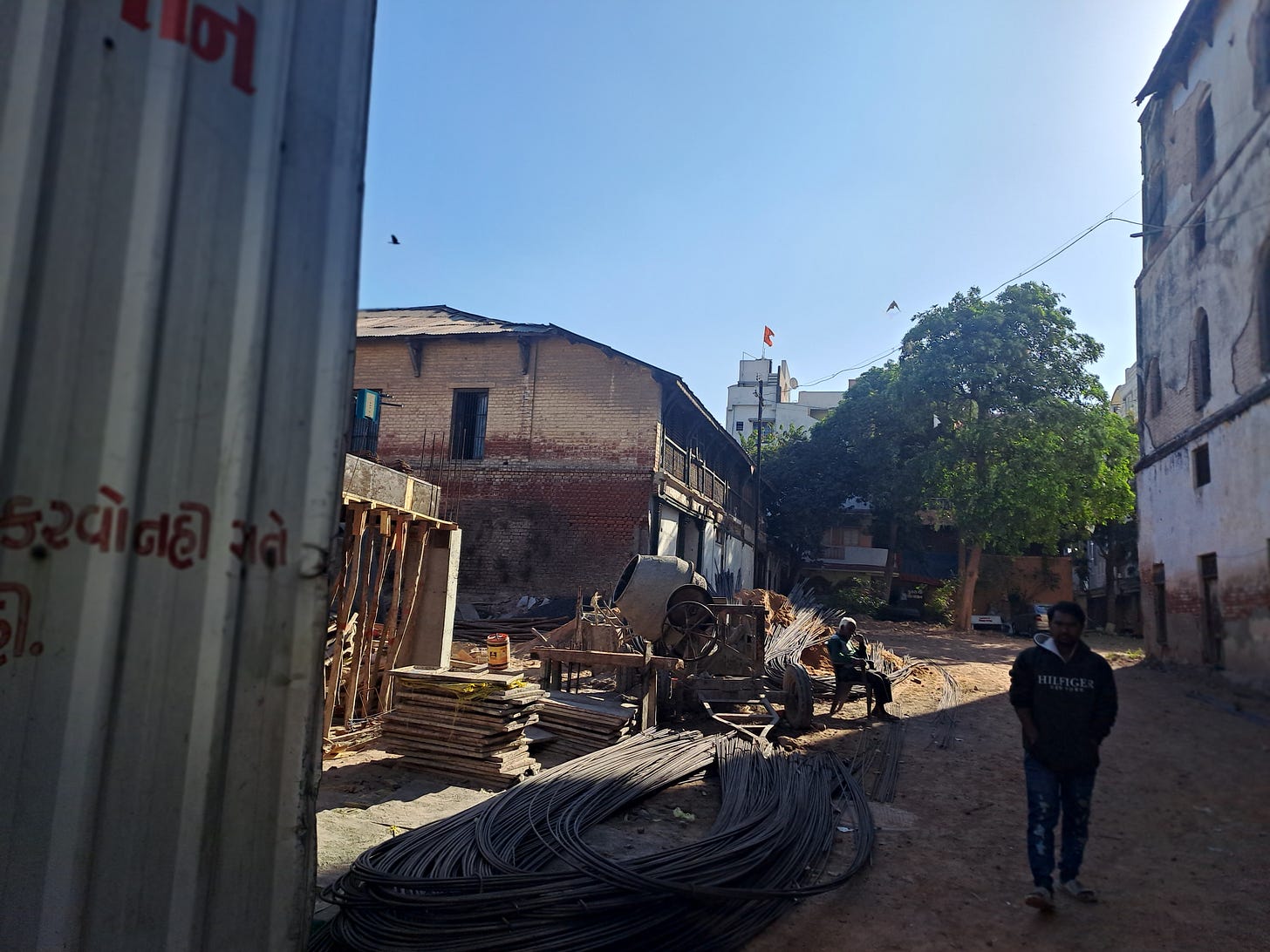
This could be a lovely use case for AR (augmented reality) where one would point their phone or tablet towards the existing structure and in its place would appear the older one. Easy to do if architectural drawings/plans or photographs exist of the demolished structure. A great way to ‘preserve’ heritage in digital form.